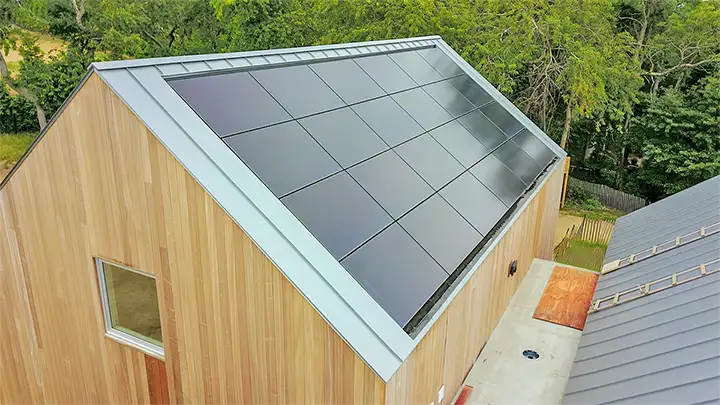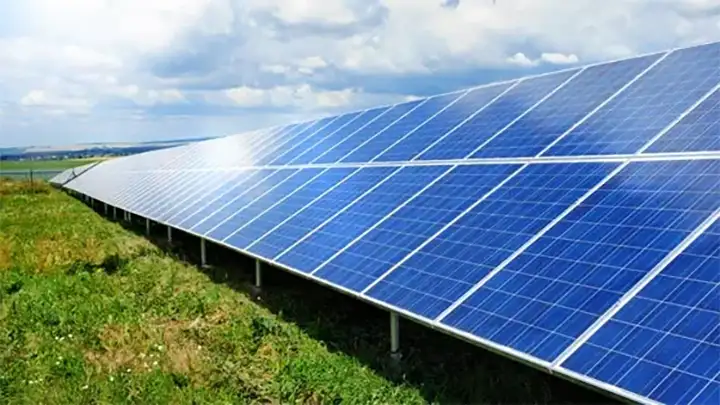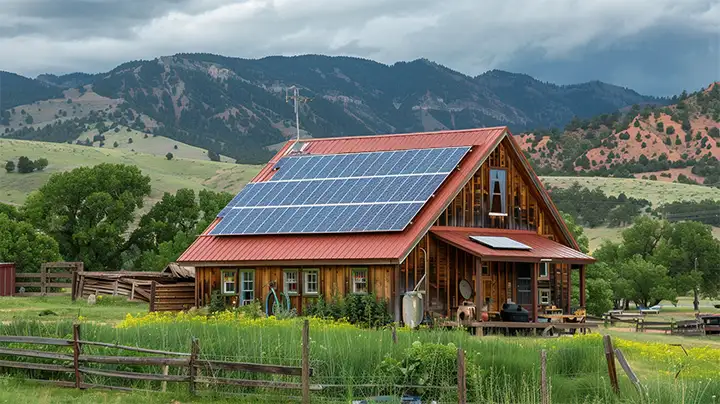
Transitioning to an off-grid lifestyle involves finding reliable and sustainable energy sources. Solar power is a popular choice due to its renewable nature and decreasing costs. However, not all solar panels are created equal. In this guide, we’ll explore the various types of solar panels that can power your off-grid homestead, helping you make an informed decision.
Before diving into the types of solar panels, it's essential to understand how they work. Solar panels convert sunlight into electricity using photovoltaic (PV) cells. These cells are made from semiconductor materials, usually silicon. When sunlight hits the PV cells, it knocks electrons loose, creating an electric current.
There are three main types of solar panels: monocrystalline, polycrystalline, and thin-film. Each type has its advantages and disadvantages, making them suitable for different applications.
Overview
Monocrystalline solar panels are made from a single, continuous crystal structure. They are easily recognizable by their uniform, dark appearance and rounded edges.
Advantages
High Efficiency - Monocrystalline panels typically have the highest efficiency rates, often between 15-20%. This means they can produce more electricity from the same amount of sunlight compared to other types.
Space-Efficient - Due to their high efficiency, monocrystalline panels are ideal for smaller spaces. They generate more power per square foot, making them suitable for limited roof space.
Durability - These panels have a long lifespan, often exceeding 25 years. They also perform better in low-light conditions and have a higher tolerance for heat.
Disadvantages
Cost - Monocrystalline panels are generally more expensive than other types due to the manufacturing process.
Waste - The production process involves slicing silicon wafers, which can result in significant material waste.
Best For:
Homesteads with limited space
Those looking for maximum efficiency and long-term reliability
Among monocrystalline panels, we recommend those that are N-type vs P-type panels. The brands we always recommend are SunPower, Panasonic, LG and Hanwha QCells. They have the best performance panels in the industry along with output warranties to back up the performance parameters.


Overview
Polycrystalline solar panels are made from silicon crystals that are melted and fused together. They have a bluish hue and a square shape with straight edges.
Advantages
Cost-Effective - Polycrystalline panels are typically less expensive than monocrystalline panels. The manufacturing process is simpler and results in less waste.
Good Efficiency - These panels have efficiency rates of 13-16%. While lower than monocrystalline, they could provide a good balance of performance and cost.
Environmentally Friendly - The production process is more eco-friendly, as it generates less waste compared to monocrystalline panels.
Disadvantages
Lower Efficiency - Polycrystalline panels are less efficient, meaning they require more space to produce the same amount of electricity as monocrystalline panels.
Heat Sensitivity - These panels are more sensitive to high temperatures, which can reduce their efficiency in hot climates.
Best For:
Homesteads with ample roof or ground space
Those looking for a balance between cost and efficiency
Polycrystalline panels used to have a significant enough price difference between monocrystalline panels to be worthy of consideration, but with most solar cell manufacturers focusing on the production of monocrystalling cells, we would avoid these panels as well as monocrystalline panels provide better efficiency and have better long term performance degredation curves than polycrystalline panels.
Overview
Thin-film solar panels are made by depositing one or more layers of photovoltaic material onto a substrate like glass, plastic, or metal. They are flexible and lightweight.
Advantages
Versatility - Thin-film panels can be integrated into various surfaces, including roofs, walls, and even windows. Their flexibility allows for creative and innovative applications.
Low Cost - These panels are generally cheaper to produce, making them a cost-effective option for large installations.
Performance in Low Light - Thin-film panels perform well in low-light conditions and are less affected by shading and high temperatures.
Disadvantages
Lower Efficiency - Thin-film panels have lower efficiency rates, typically between 10-12%. This means they require more space to produce the same amount of electricity as crystalline panels.
Shorter Lifespan - They usually have a shorter lifespan and may degrade faster over time compared to crystalline panels.
Best For:
Large installations with plenty of space
Applications requiring flexibility and lightweight panels
These days, it would be fairly difficult to implement any commercially available thin film solar panels for homestead use. Voltages that come out of CdTe, CIGS or Amorphous Silicon panels make it a challenge to work with charge controllers for small homestead use and we would recommend avoiding the use of these panels at all cost.


When selecting solar panels for your off-grid homestead, consider these additional factors:
Energy Needs - Assess your daily energy consumption to determine the size of your solar system. Consider all electrical appliances, lighting, and other energy needs.
Battery Storage - Off-grid systems require batteries to store excess energy for use during cloudy days or at night. Lithium-ion batteries are popular due to their efficiency and long lifespan.
Inverter - An inverter converts the DC power generated by solar panels into AC power, which is used by most household appliances. Choose a high-quality inverter to ensure reliable power conversion.
Mounting Systems - Consider how and where you will mount your solar panels. Roof-mounted systems are common, but ground-mounted systems are an option if you have ample land.
Maintenance - Regular maintenance is important for optimal performance. Clean panels if there is an excess of dust build up or bird excrement and check for any signs of wear or damage.
Conclusion
Choosing the right solar panels for your off-grid homestead involves understanding the different types available and evaluating your specific needs and circumstances. Monocrystalline panels offer high efficiency and durability, making them ideal for smaller spaces and long-term reliability. Polycrystalline panels provide a cost-effective balance of performance and cost, suitable for those with ample space. Thin-film panels are versatile and affordable, perfect for large installations or innovative applications.
By carefully considering your energy needs, budget, and the advantages and disadvantages of each type of solar panel, you can make an informed decision that ensures a sustainable and self-sufficient off-grid lifestyle. Embrace the power of solar energy and enjoy the benefits of living off the grid while contributing to a greener planet.